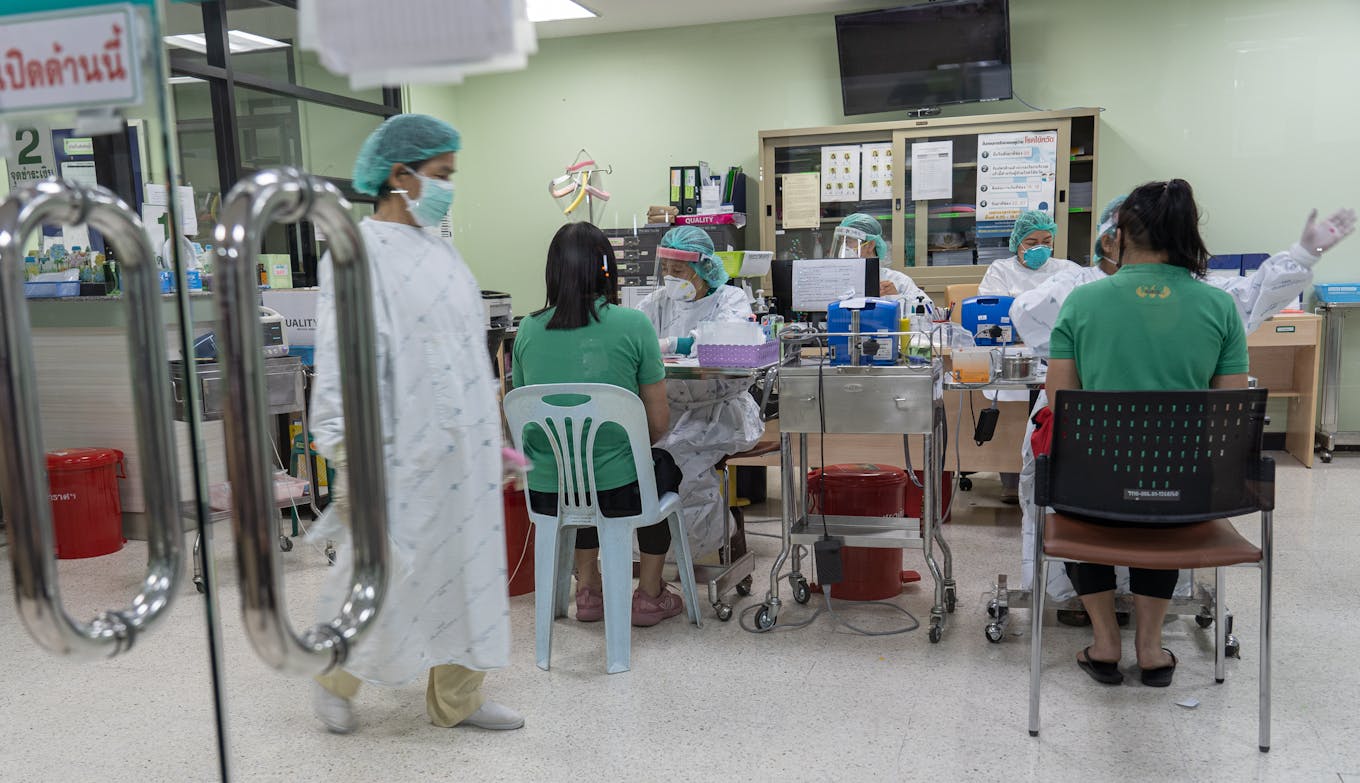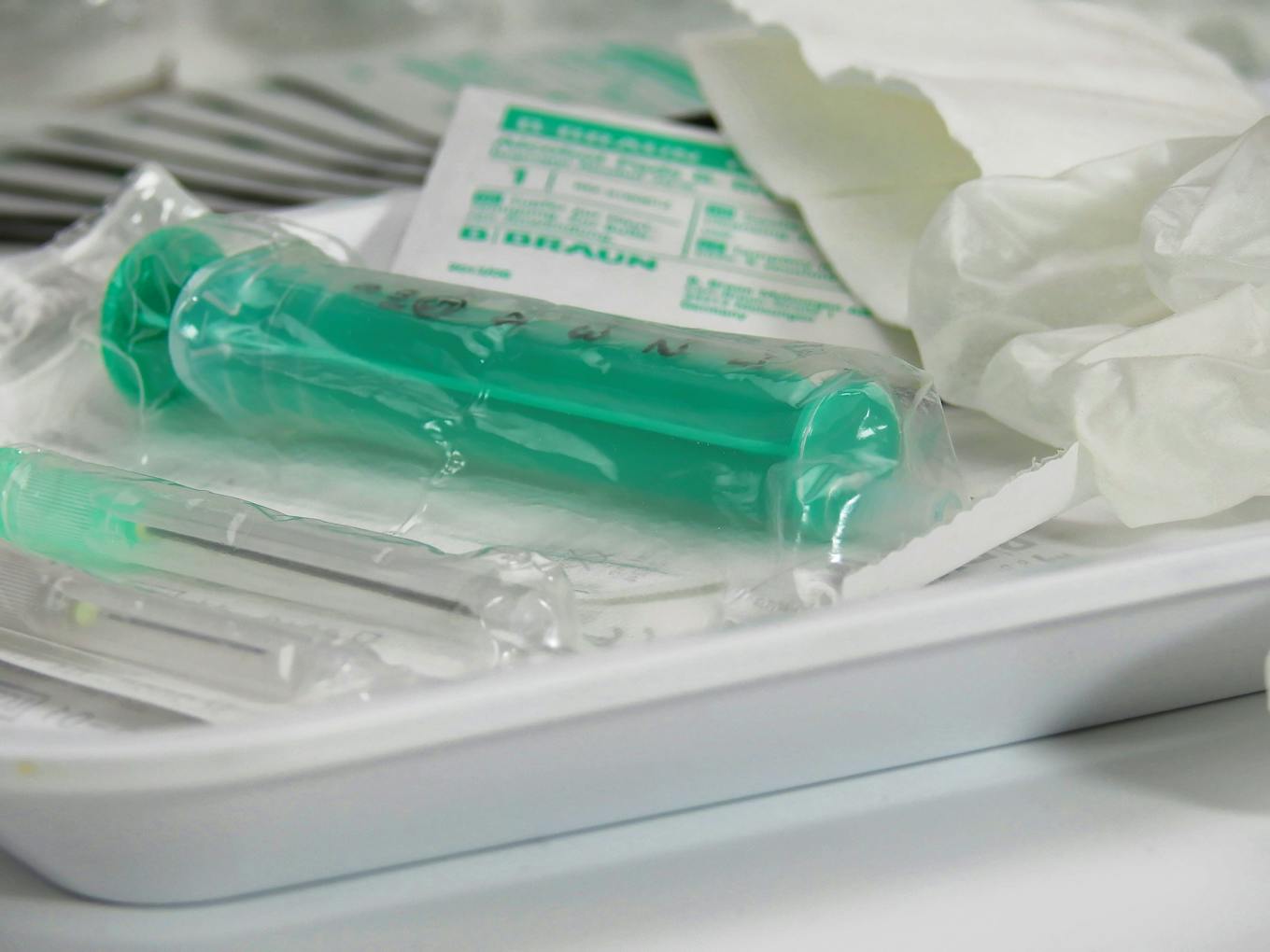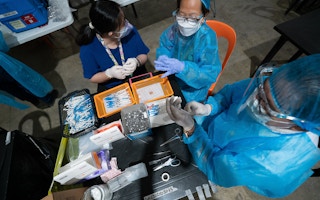The world breathed a collective sigh of relief earlier this year, when Covid-19 was declassified as a global health emergency.
Hastily erected vaccination and test centres around the world were taken down after three years, as the last waves of winter infections tapered off. Heaps of medical waste – syringes, masks, scrubs – were incinerated and landfilled. More were dredged up in rivers and oceans.
As nations counted losses and devised plans to beef up health systems, many also pledged to redouble efforts to make the profession more sustainable.
Healthcare’s outsized impact on the environment was a known concern before the pandemic struck. A 2019 report found that the sector contributed to over 4 per cent of global emissions – more than other sectors like shipping (3 per cent), aviation (2 per cent) and hotels (1 per cent).
In rapidly developing but cash-strapped Southeast Asia, the struggle to strengthen while cleaning up healthcare could pitch different aspects of sustainable development – well-being and the environment – against each other.
As it stands, healthcare in Southeast Asia is not a big greenhouse gas contributor. The six largest markets, Indonesia, Malaysia, Philippines, Singapore, Thailand and Vietnam, spewed 63 million tonnes of emissions in 2014, or 3 per cent of the industry globally. Indonesia has one of the lowest per-capita medical emissions in the world.
But healthcare emissions are known to grow with national wealth; Southeast Asia’s economy has grown by 50 per cent in the nine years since. By comparison, healthcare already accounts for 8.5 per cent of emissions in the United States.
Experts in the region say getting cost-conscious hospitals to move faster on sustainability remains challenging after the pandemic. While some have found good business cases in slashing waste and switching to clean electricity, scaling up these efforts requires a larger-scale overhaul of hospital operations, they say.
And while certain aspects of healthcare – operating theatres, powerful scanners and such – are inherently power-hungry, habits and a lack of data could also be getting in the way of decarbonisation.
Business case
“Most of Southeast Asia’s public health systems don’t have enough funding to continue operating at normal levels [post Covid-19]. Convincing them to do decarbonisation work with limited resources is a bit of a challenge,” said Manjit Sohal, regional climate manager in the Asia branch of Health Care Without Harm.
So the global non-profit is helping hospitals find ways sustainability can also save money. In Southeast Asia, it advocates for measures such as switching to energy efficient lights and adopting solar energy, where upfront investments can be offset later with lower power bills.
“You really have to give [hospitals] a good business case on why they should adopt [certain measures],” Sohal said.

Healthcare workers in medical garb at the Thailand Bamrasnaradura Infectious Disease Institute during the Covid-19 outbreak. Image: Flickr/ UN Women Asia and the Pacific.
Finding cost savings in sustainability is something Mary Johnston Hospital, a 120-bed facility in Manila city in the Philippines, has had some success with.
At the height of the pandemic, the hospital sanitised and reused medical protective gear up to three times before disposal, at a time when some equipment was so short in supply that they could only be found on the black market at triple the price.
In recent years, the thousand-odd solar panels on its rooftop have also been able to provide up to 35 per cent of the hospital’s power needs. The institution has been diverting 5 to 10 per cent of the savings to funding treatment for HIV and tuberculosis patients.
“We were looking to save the environment and save people at the same time,” said Dr Glenn Paraso, the hospital’s executive director.
The photovoltaic panels had cost about ₱27 million (US$480,000), which the hospital amortised over five years, but cost savings would be made for 25 years, the lifespan of the panels, Paraso said. Some of the cells also came about via partnerships and donations from church networks the Methodist hospital is part of.
Other sustainability attempts have been more difficult. Mary Johnston hospital had explored replacing plastic intravenous (IV) drip bags with reusable glass ones, but upfront costs would have doubled for the essential tool.
“What could I do? Can I pass [the cost] on to our patients?” Paraso said.
A switch to more sustainable hospital equipment could be significant – over 70 per cent of healthcare emissions globally come from “Scope 3”, or indirect supply chain sources.
Beyond IV bottles, reusable equipment – scalpels, syringes, tweezers – remains available in the region, experts tell Eco-Business, though they are quickly being replaced by disposable plastic equivalents, and one-time use kits, which are cheaper and more handy for doctors.
Bigger operational changes are needed too if more doctors switch back to reusables. While neighbourhood clinics can sanitise small tools in autoclaves – medical pressure pots for killing germs – larger, odd-sized and more sterile equipment, along with simply having more gear to clean, would require more centralised sterilisation centres to be set up, explained Dr Louis Tan, chief executive of StarMed Specialist Centre in Singapore.

Medical equipment is increasingly sold as one-time use kits. Reusable options are still on the market today, but are more expensive and becoming less common. Image: Pxhere.
Data void
New medical trends have already started emerging from the Covid-19 pandemic, and one in particular – telemedicine – is said to reduce the environmental burden of healthcare.
Initially offered to ease congestion in hospitals during the pandemic, patients have since caught on to video calling doctors for minor illnesses and simple consultations from home. Mobile healthcare application users doubled in Singapore from 2020 to 2022, consultancy Bain & Company reported. Emerging markets like Thailand and the Philippines showed greater jumps in application of over 11 and eight times, respectively.
The idea is that hospitals’ Scope 3 emissions fall if they provide more telemedicine services, since fewer patients travel to doctors in person. But Tan has also seen a corresponding need for more transport services for medication delivery.
“Delivered medical items come in a lot of packaging, and the [trip down] to patients’ homes could just be for a couple of tablets, or a bottle of cough syrup. I think this is starting to emerge as a potential problem,” Tan said.
The bigger-picture problem, Tan explained, lies in figuring out if new sustainability measures really work for the environment and patient safety – including where reusable tools are adopted, or adopting different workflows.
Such information requires industry benchmarks and more granular research, something that healthcare institutions are not equipped for. At the same time, the medical industry operates on hard data and evidence, Tan said.
“If you have the [safety and sustainability] information, no problem. But more often than not, things are evolving, and if you are at the forefront of that change, the data [isn’t available]. That’s why sometimes healthcare takes a longer time to adapt,” he said.
To solve the accounting issue, Health Care Without Harm has developed an online calculator tailored for medical institutions, with guidance for hospitals to measure, for instance, patient commute, the use of anaesthetic vapours (some are powerful greenhouse gases), and pharmaceutical procurement.
The non-profit started training Southeast Asian medical professionals to use the calculator last year, and about 200 staff from 120 institutions have gone through the course.
“In terms of who is actually reporting…it is still a work in progress because getting greenhouse gas data takes a lot of time,” Sohal said.
But she stresses a lack of data cannot be grounds for inaction.
“When you look at a hospital, immediately you can tell what can be improved. You don’t need a set of numbers to tell you that. The numbers help you prioritise and maximise your efforts, but [the lack of which] shouldn’t stop you from doing something,” she said.
Tan agrees that there are obvious inefficiencies to fix in standard medical practice – such as prescribing patients more medication and refills than needed.
Few partners
Mary Johnston Hospital’s Paraso said having more hospitals on board for sustainability measures could help too – such as if collectives, with more buying power, bargain for lower prices on reusable medical tools from their suppliers.
But finding like-minded healthcare partners could prove challenging. While more hospitals are looking at using resources more efficiently, few are setting pledges and targets in stone.
In the United Nations’ Race to Zero campaign, where businesses and local governors pledge action towards net-zero emissions by 2050, only 81 out of over 12,500 entities are in the healthcare sector. In contrast, there are 662 financial firms in the campaign, along with over 1,100 city governments.
Mary Johnston Hospital is one of the five hospitals in Southeast Asia in the Race to Zero initiative, along with Saint Paul’s Hospital Iloilo (Philippines), Khoo Teck Puat Hospital (Singapore), Sunway Medical Centre Velocity (Malaysia) and Syamsudin Hospital (Indonesia).
The low participation of hospitals could be partly attributed to the strict rules. The Race to Zero campaign wants members to have detailed action plans and report on progress annually – something Mary Johnston Hospital will have to start doing soon.
The campaign wants members to focus on halving emissions by 2030 and reaching net-zero by 2050 – the best way to keep global warming under the 1.5°C safety threshold, according to scientists.
Paraso acknowledges such targets are, as it stands, unattainable – with at most a 10 per cent emissions cut by 2030 likely. But he says participating in the campaign is about being accountable and making measurable progress.
“
The health sector has a higher moral responsbility, because there is a Hippocratic Oath to do no harm. That should extend beyond the patients, to the environment that impacts patient health.
Manjit Sohal, regional climate manager, Health Care Without Harm Asia
At a national level, Laos, Timor Leste and Indonesia are among 66 countries that pledged to make their health systems more sustainable at the COP26 climate conference in 2021, held amid the pandemic. Laos said it would halve healthcare emissions by 2030.
While disruptive, Covid-19 helped jolt policymakers into taking action on sustainability, Health Care Without Harm’s Sohal said. Health ministries across Southeast Asia have a “general awareness”, she said, though not all know their specific carbon footprint.
What’s next?
For now, many of the feasible sustainability actions centre around renewable energy, waste reduction and improving operational efficiency. Novel solutions, such as better hospital planning with artificial intelligence and medical gases with lower climate impacts are on the horizon.
More government support is needed to further scale up what hospitals can do, Paraso said. Solar panels probably need to get more efficient too, to further reduce the need for fossil-based power, he added.
And because a key tenet of sustainability lies in the well-being of future generations, how much responsibility doctors assume for them – and not just present patients – could matter too.
Some environmental advocacy groups in medical communities invoke in their campaigns the Hippocratic Oath, a professional pledge taken by doctors to uphold ethical standards and do no harm to patients.
Health Care Without Harm says the oath should extend to “people and the environment in the long run”. Sohal added that it means the health sector has a greater duty than other commercial sectors to decarbonise.
It is a message that may require greater amplification in Southeast Asia – the link between Hippocratic Oath and sustainability is not common talk in Tan’s work circles, he says.
“I suppose at the working level, on the ground, it is not something that many of us are aware of,” he added.










